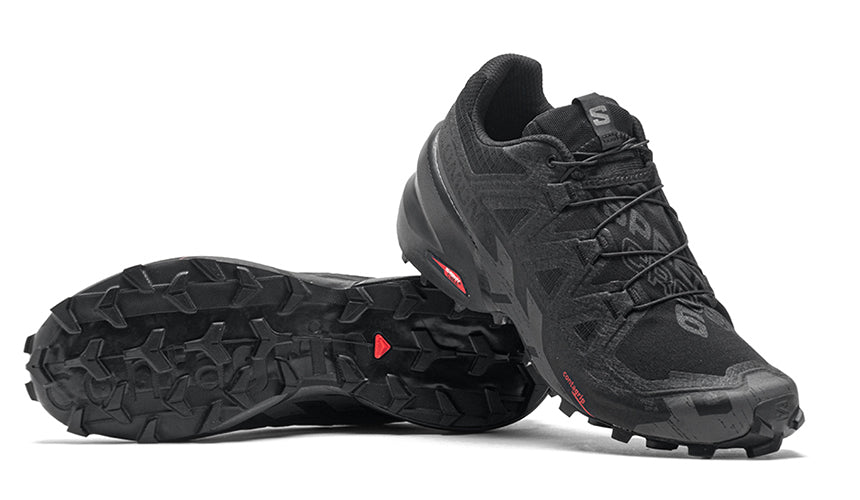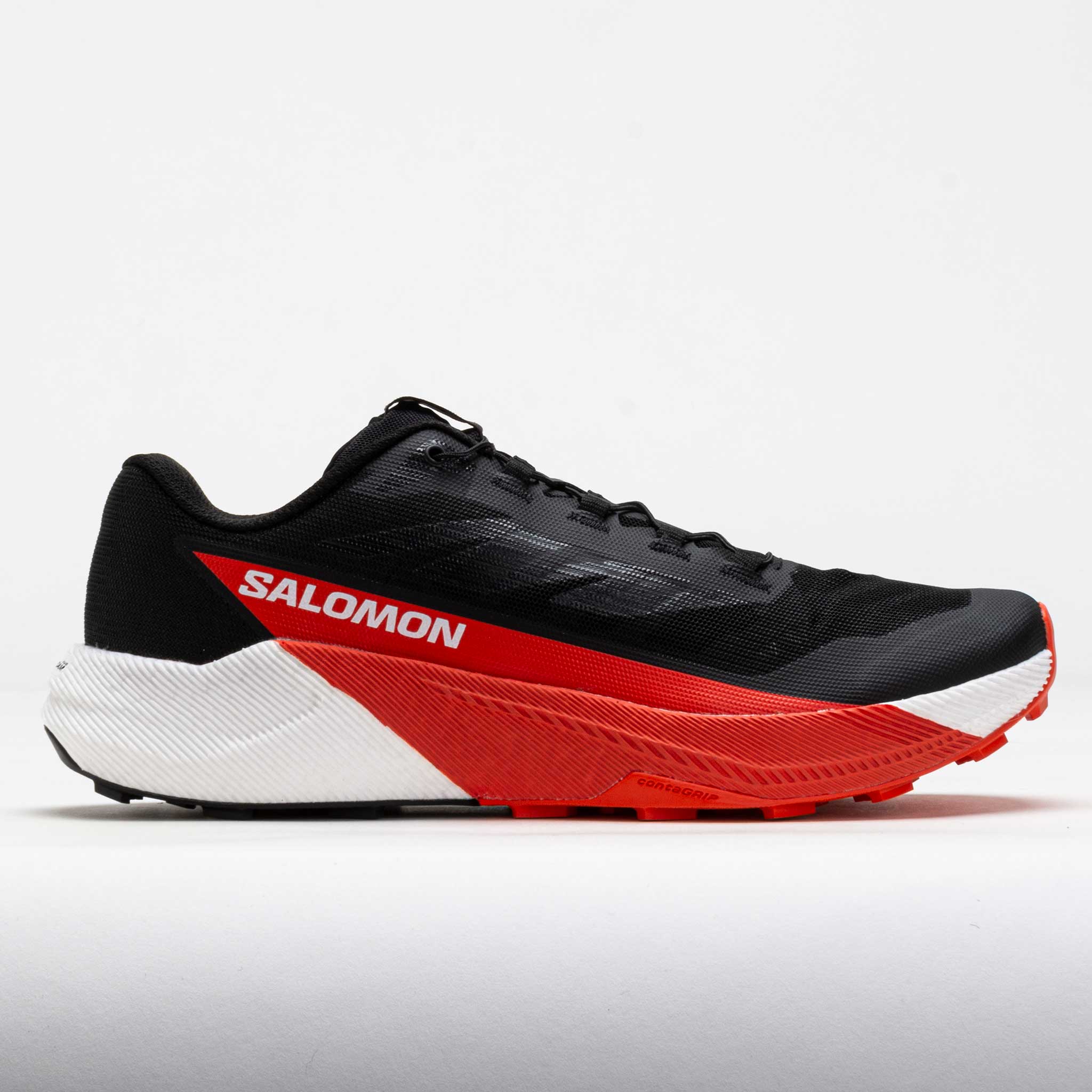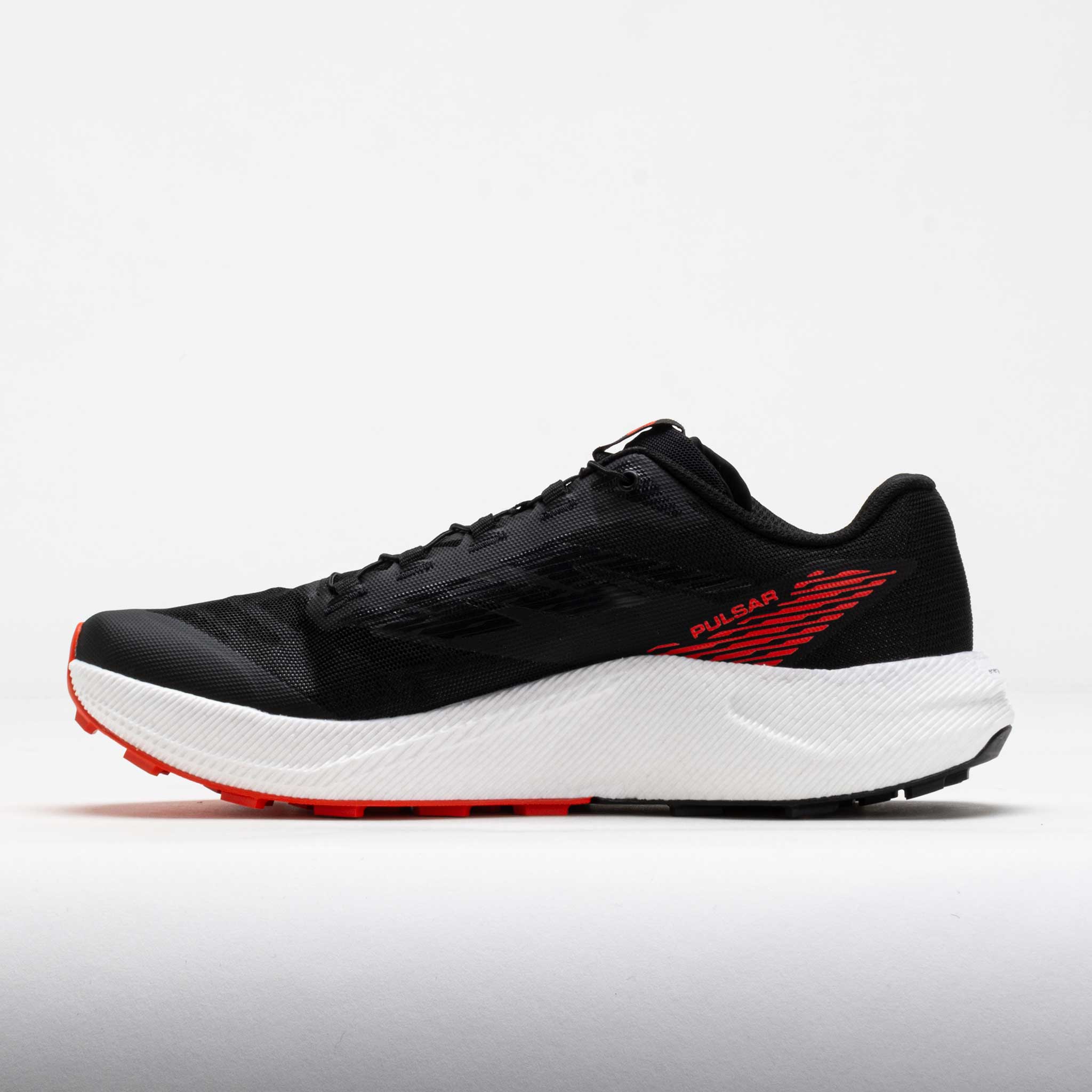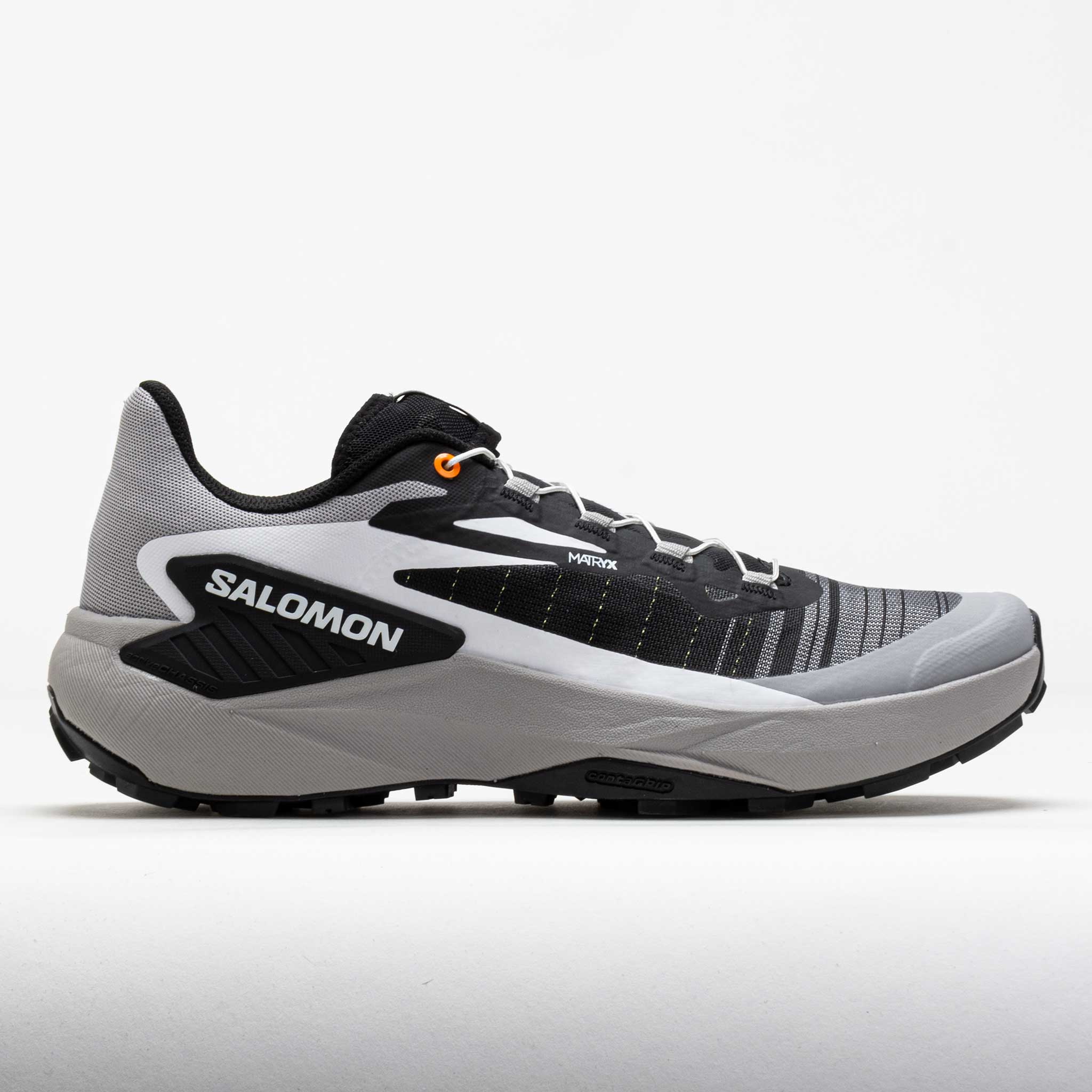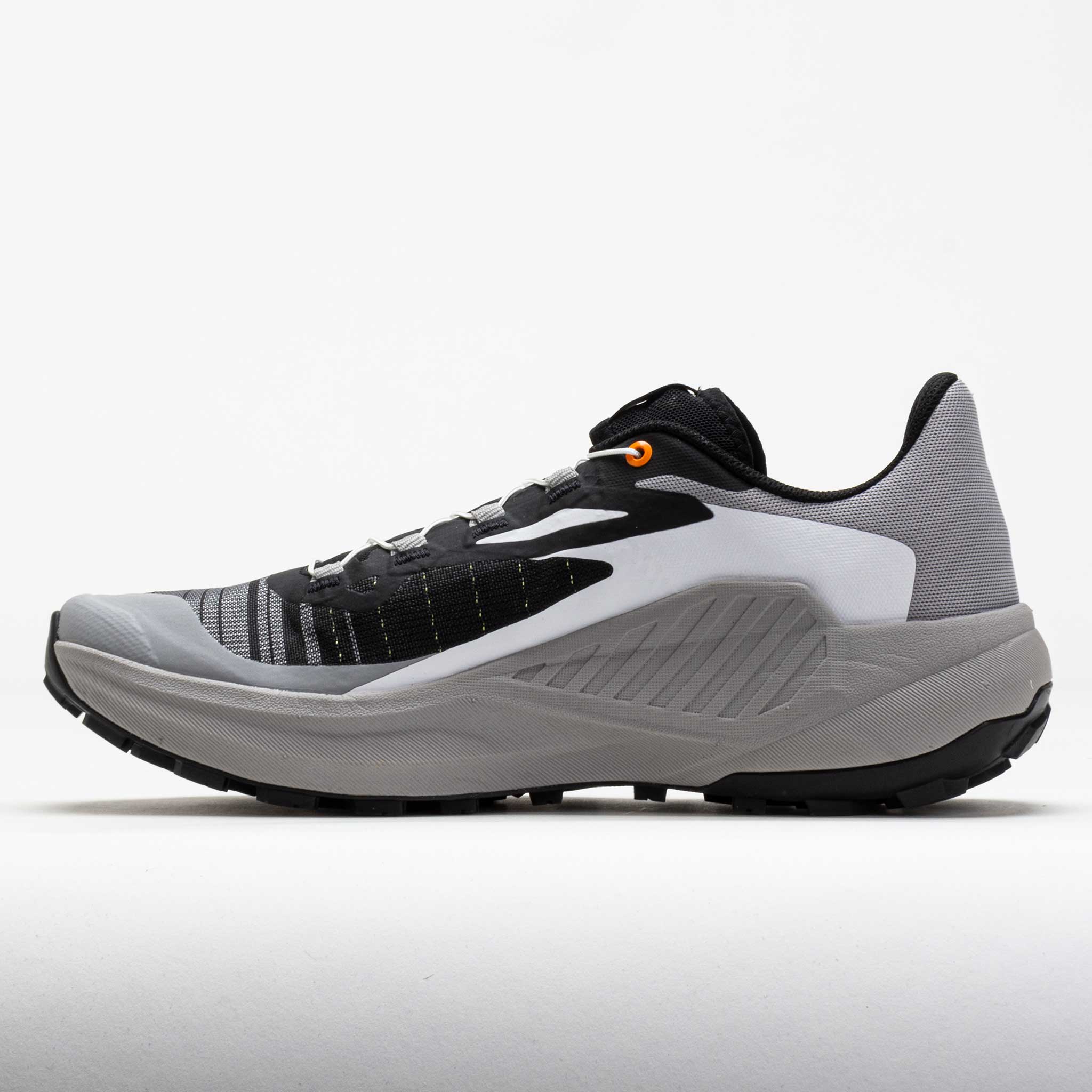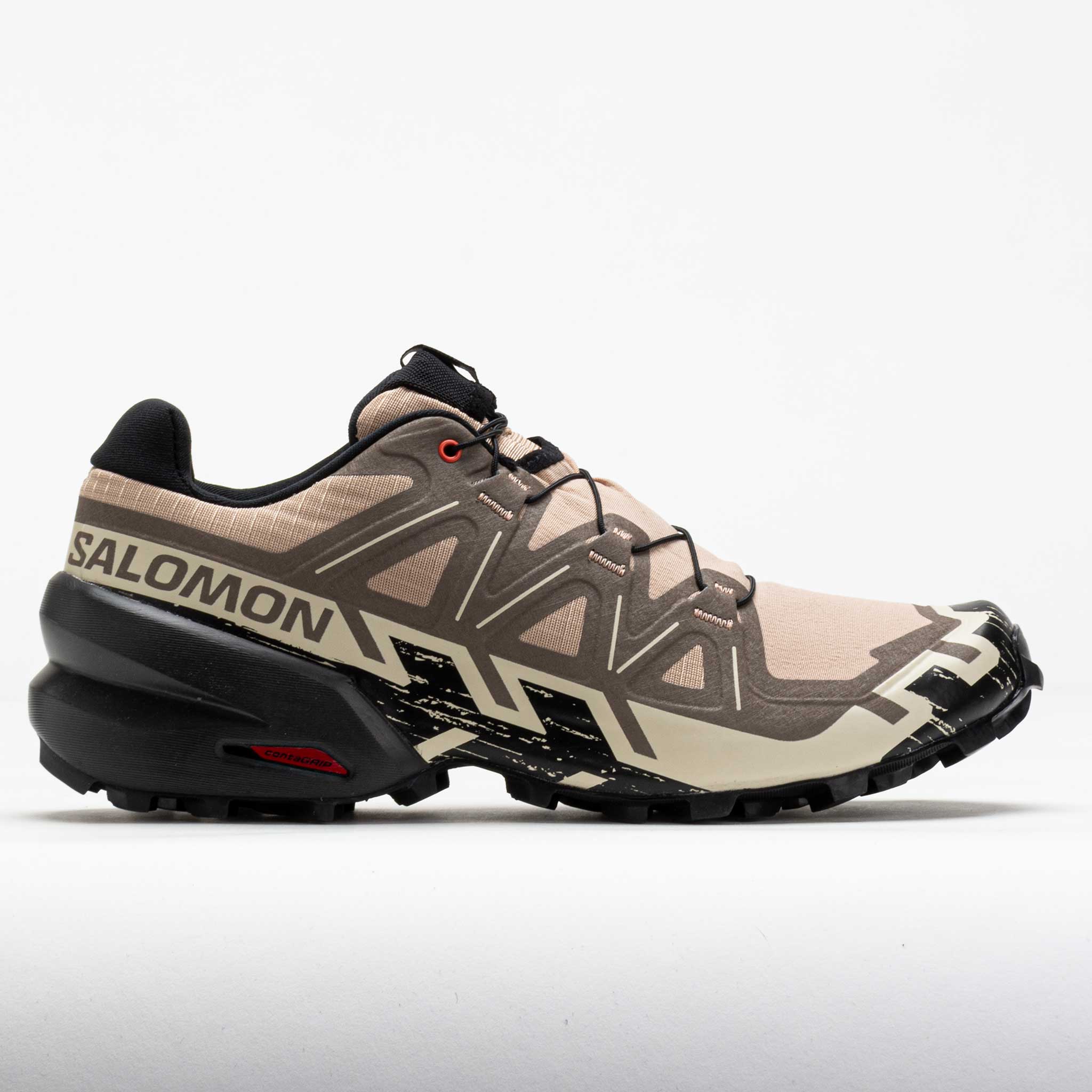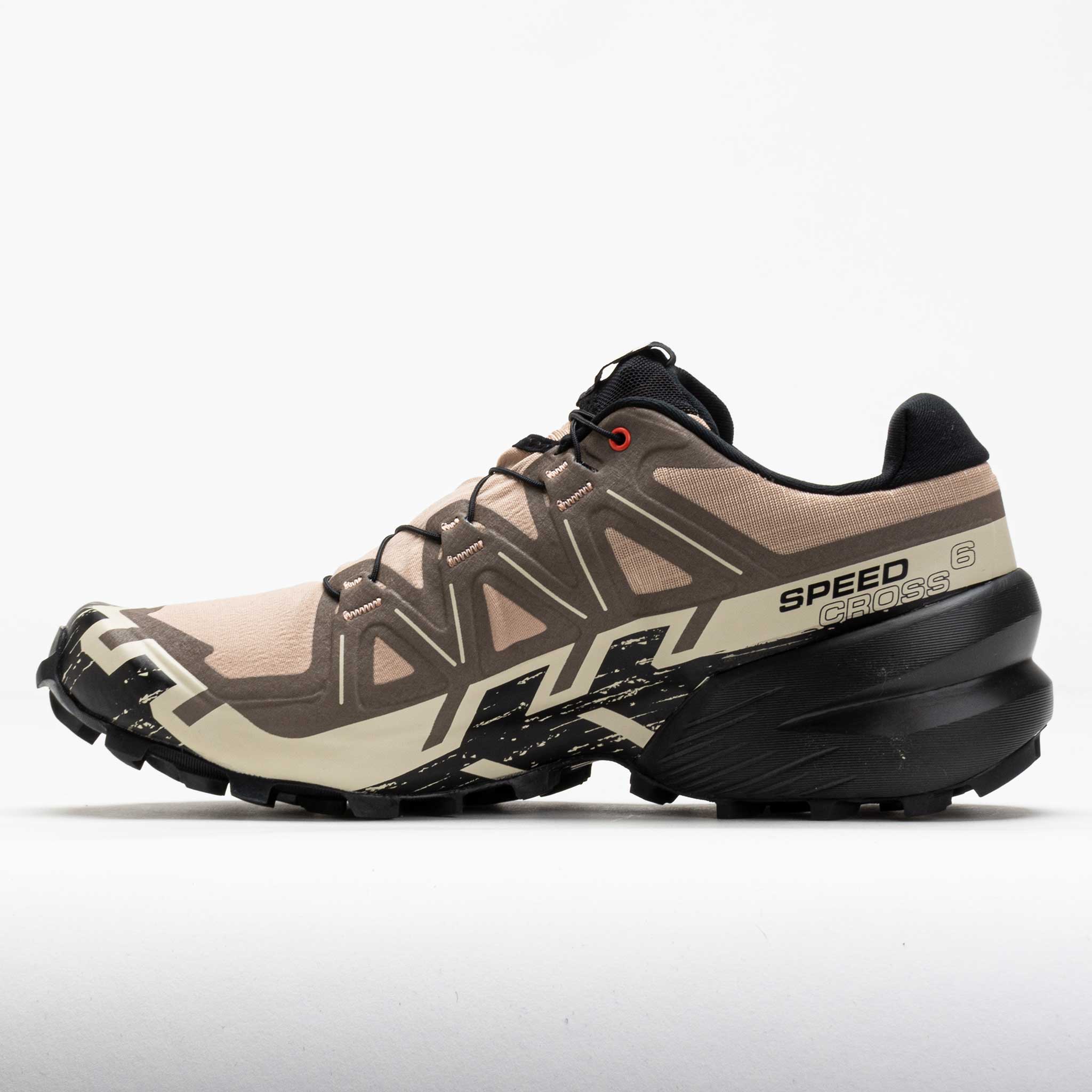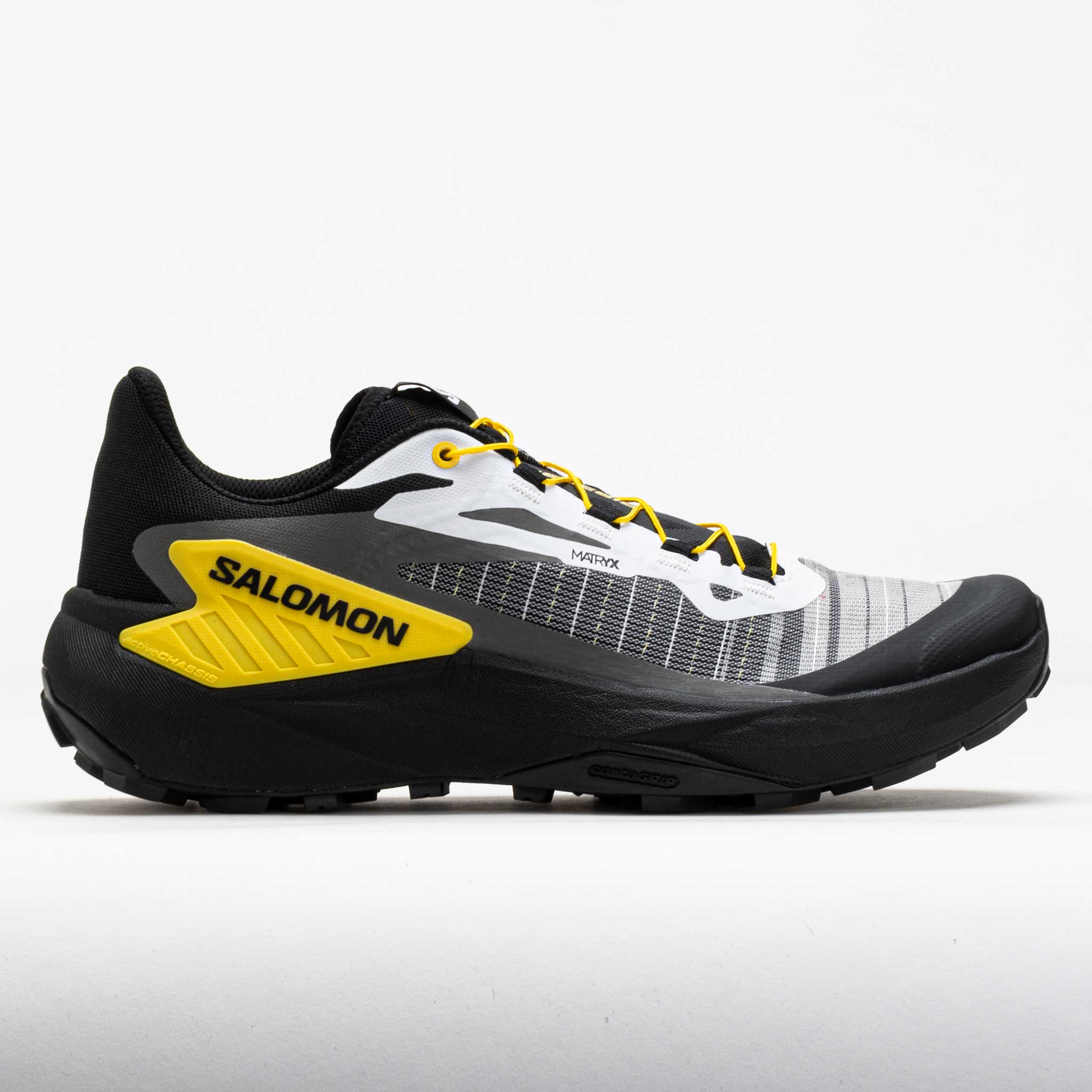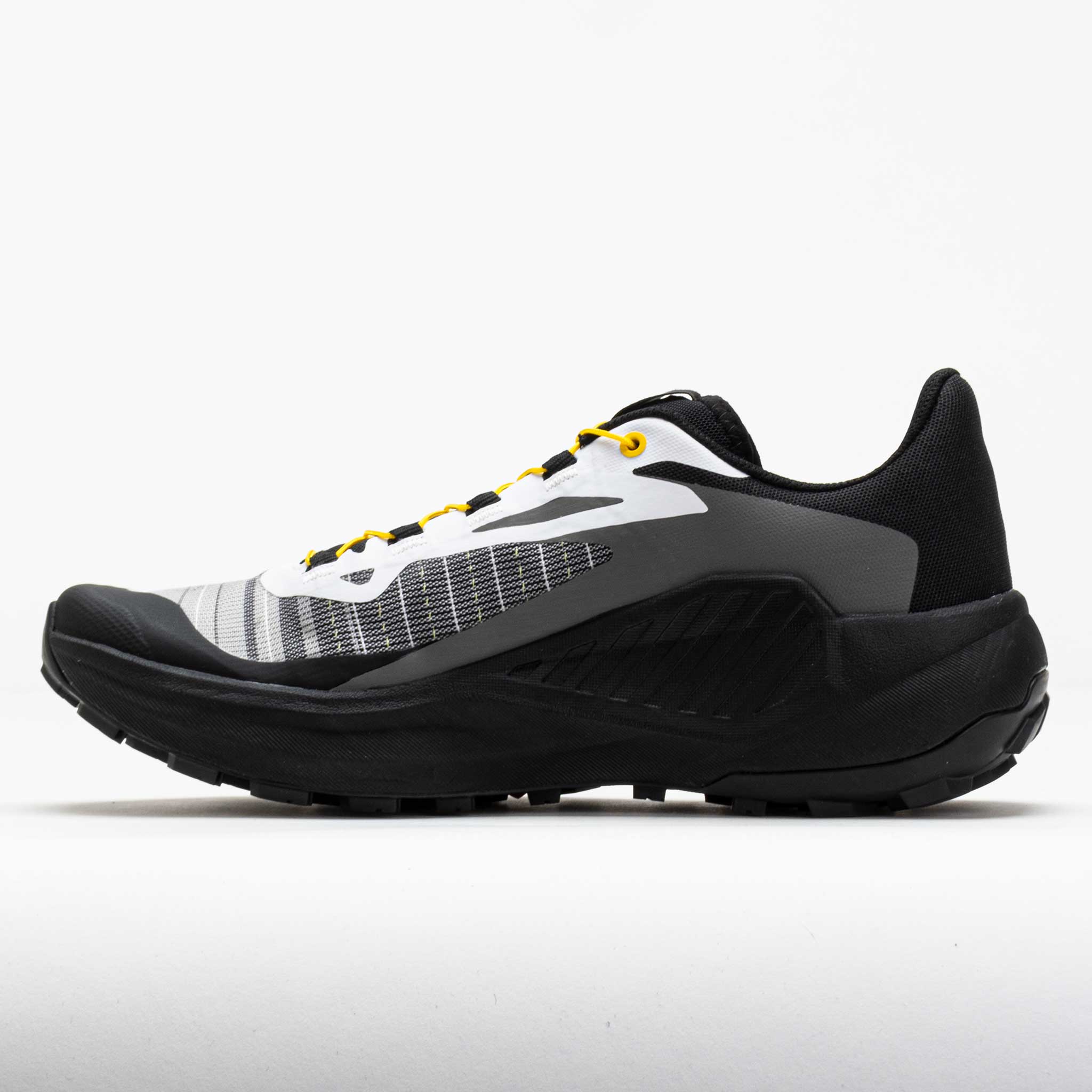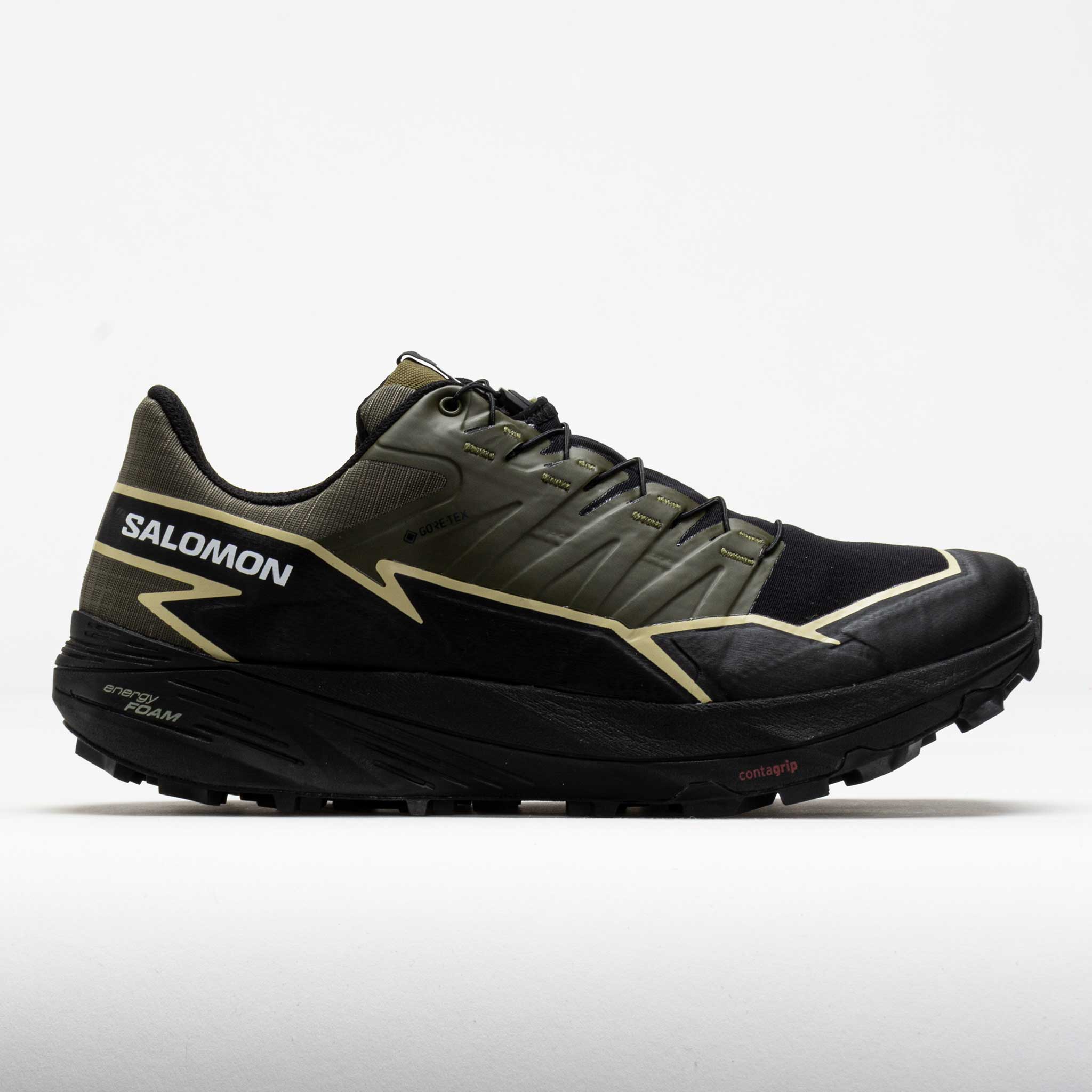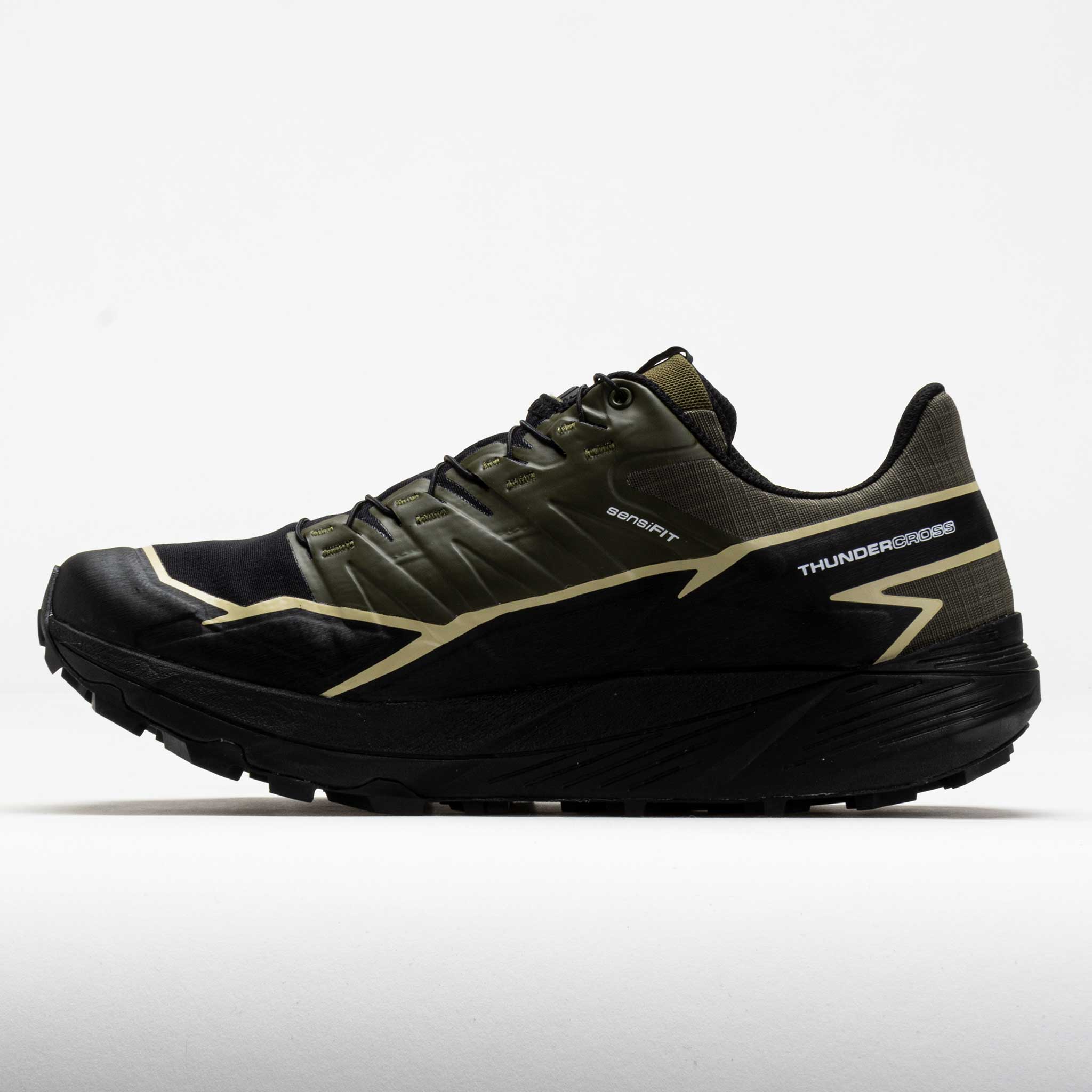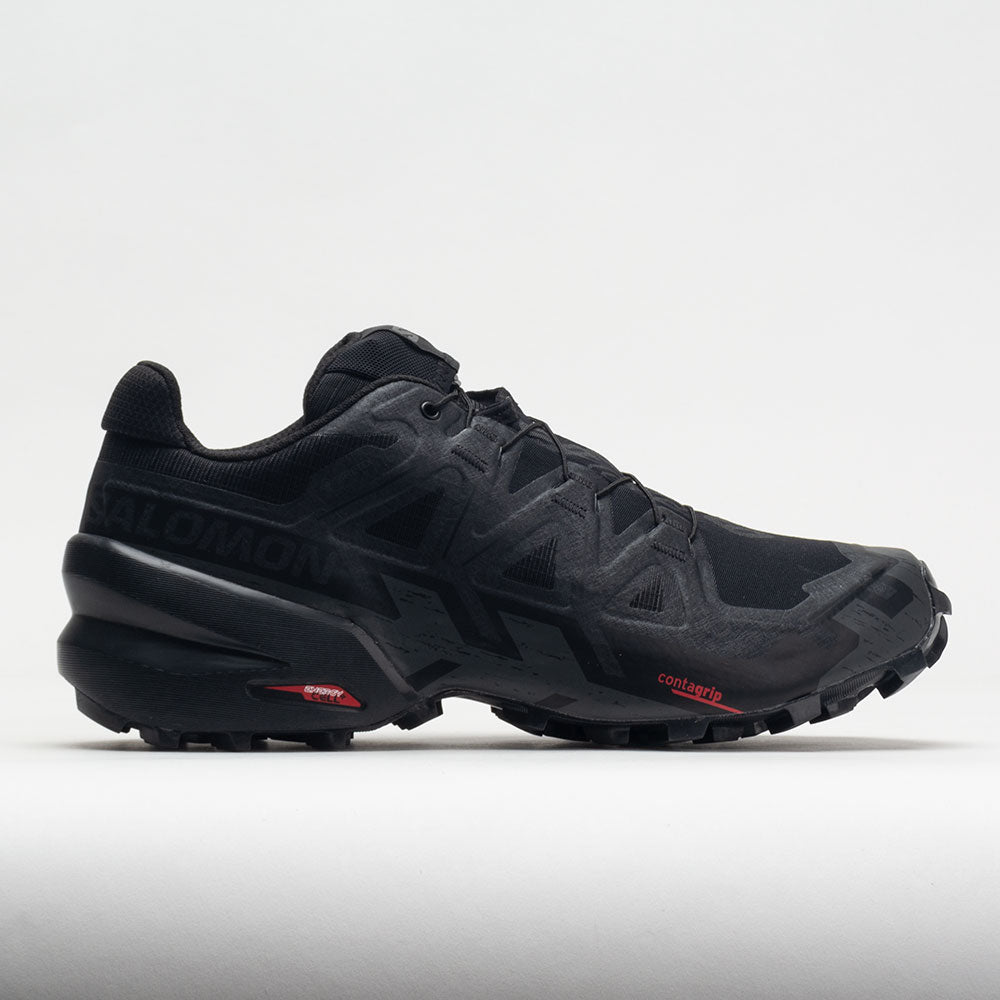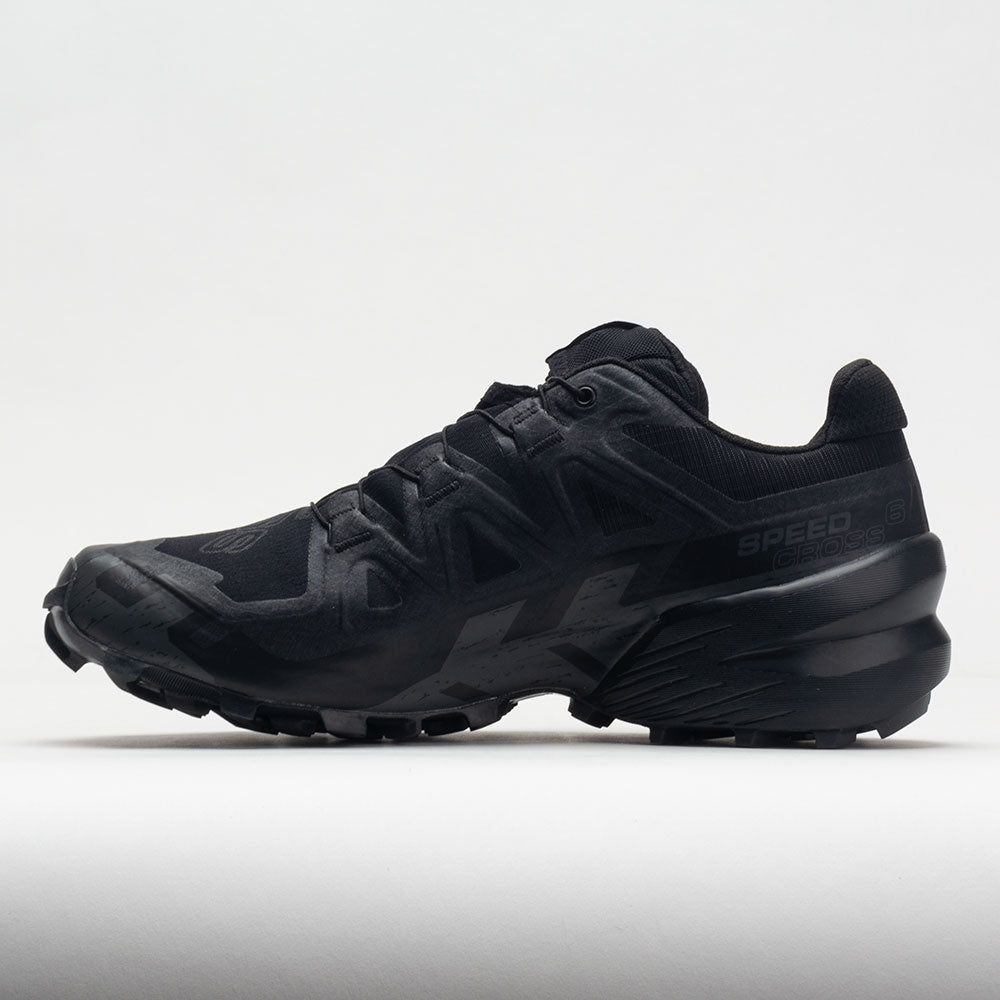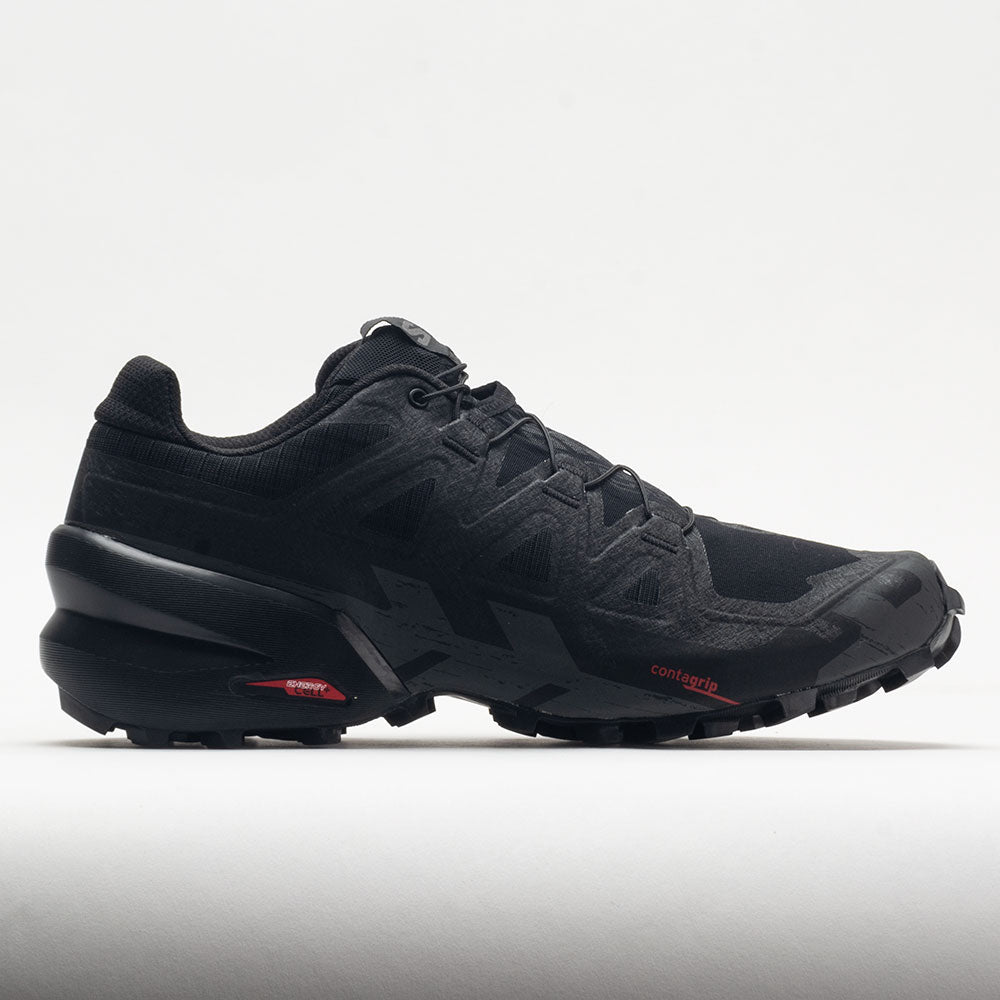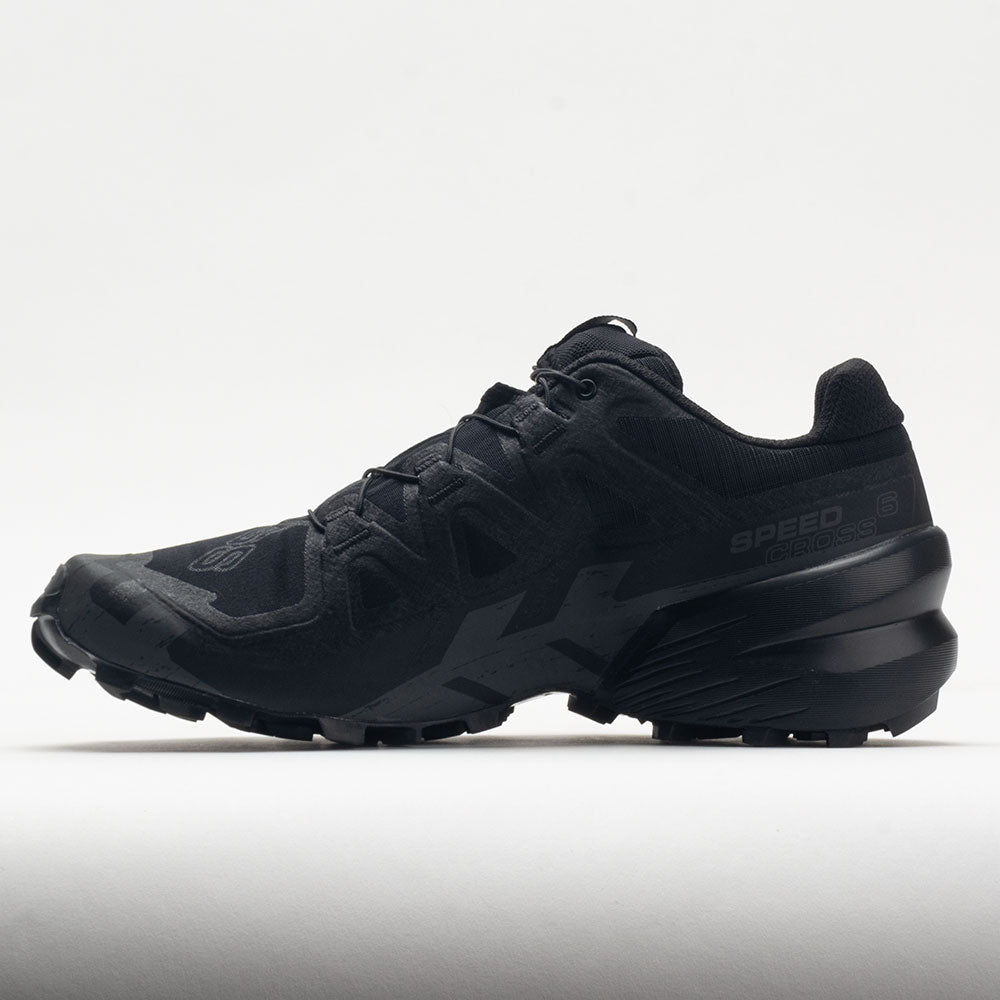In this article, we’ll go over the different technologies and features of the Salomon Trail shoes. We’ll go over each shoes’ strengths to help you decide which model would best fit your running needs.
How Salomon trail running technology improves your performance.
Salomon Speedcross 5 – Salomon’s shoe for rugged, rocky terrain
The Speedcross is one of Salomon’s most popular models.
This shoe was built for technical terrain – rocks, roots, and slippery surfaces.
The Speedcross 5 has aggressive 6mm lugs, arranged in a strategic pattern. The forefoot lugs are facing forward while the lugs under the heel are facing backward. This gives you excellent traction for climbing hills and sprinting down them.
The Speedcross also has underfoot protection. This is thanks to the rock plate under the midsole that shields you from sharp rocks and debris.
Because this shoe is packed with a ton of protective technology, it's a tad on the hefty side. If you’re looking for a lighter model for racing or speed, you might want to try Sense 4 Pro.
FYI– The Speedcross 5 is also available in a waterproof model, Speedcross 5 GTX.
What you’ll notice:
- Soft & sticky outsole.
The Speedcross’s outsole is made with softer rubber to give you a stickier grip. But, though the rubber is stickier, it tends to wear faster than a harder compound.
- Solid heel & a high drop (for a trail shoe).
This shoe has a 10mm drop which is pretty high for a trail shoe. The higher drop helps encourage you to land on your heel. And, you'll notice that Salomon packed extra padding in the heel of this shoe for added protection.
Salomon Wildcross – Salomon’s extreme technical terrain shoe
The Wildcross was designed to be Salomon’s rugged model. This shoe can handle super technical terrain and muddy trails.
The multidirectional 6mm lugs really dig down into the soft or muddy terrain. And the sticky grip of the outsole can trek across obstacles like rock or root even in wet conditions.
For a rugged model, the Wildcross doesn't have a rock plate. If you'll be running on a trail littered with sharp rocks, you might want to look at a model that does. The Speedcross might be a good choice.
What you’ll notice:
- Secure Fit.
The design of the upper wraps snug across the midfoot to secure your foot in place. This helps keep your foot locked in when running through thick mud.
- Roomier forefoot.
Most Salomon shoes have a narrow fit. But the Wildcross has a wider forefoot, which gives a little extra room so your toes don't feel cramped up.
Salomon Sense Ride 3 – Salomon’s heavily cushioned, daily trainer
The Sense Ride 3 was the winner of the Runner’s World Editor’s Choice award.
This shoe was built for comfort, and to be an everyday trainer. It's 4mm lugs help with technical terrain but also make them transition well for road running.
The Sense ride 3 is packed full of cushion to make them comfortable and responsive. Also, they gave this shoe a mesh upper to make it light and breathable.
Because this shoe is heavily cushioned, it does weigh a bit more. If you're looking for a lighter, speedy shoe, then the Sense 4 Pro might be a better option for you.
What you’ll notice:
- Dense, protected feel.
Thanks to the thick cushioning in the midsole, your feet feel very guarded in this shoe.
Just know that the cushioning has a firmer feel. It’s not plush like that of a Hoka model.
- Breathable Upper.
This model has a mesh upper that lets air in while letting heat out. Also, they drain and dry out quickly when water gets in.
Salomon Sense 4 Pro – Salomon’s speedy, minimalist shoe
The Sense 4 Pro was designed to be the speedy, minimalist shoe on the roster.
Salomon stripped out some of the cushioning and thinned the upper to reduce weight. This helps make the shoe more speedy.
The Sense 4 Pro was built for shorter, speedy races. The cushioning is adequate, but it’s not going to keep your feet comfortable for anything much longer than a 5k.
Also the Sense 4 Pro has a very snug midfoot, which a lot of speedrunners love. But if you’re looking for a roomier fit, this might not be the best choice for you.
What you’ll notice:
- Protective.
Being a minimalist shoe means more ground feel. But, you'll still want protection from sharp rocks. That's why Salomon gave this shoe a rock plate.
- Aggressive drop.
You’ll notice that the Sense Pro has a low drop (4mm) compared to the other models. This means you’re more likely to land on your forefoot or midfoot, which helps achieve speedier runs.
How to choose the best Salomon trail running shoe for me? (What to look for in a trail running shoe)
Trail shoes need a variety of technologies for different types of terrain. They need lugs for digging down into the trail. They need a durable upper to protect against sharp objects. And they’ll need a grippy outsole to help prevent slipping on rocks, roots, and other obstacles.
Now, let’s determine which trail shoe would be best for you based on the type of running you’ll be doing.
Casual runs
This type of running is for those that are wanting to get in some exercise. Or maybe you just want to reduce some stress.
You'll want a great all-around shoe like the Sense Ride 3. This shoe has a little bit of everything you need for casual runs. But, it is a bit on the heavier side due to its heavy cushioning.
If you’d like more of a minimalist shoe so you can feel the ground beneath you, then you might appreciate the Sense Pro 4. This shoe isn't heavily cushioned but it would be great for shorter runs.
Tempo/Fartlek training
Tempo training is more intense. You’ll be running in a variety of different directions and at different paces. For this type of running style, you’ll need a dynamic trail shoe.
The Speedcross 5 would be a suitable choice. It has a super-grippy outsole with aggressive lugs. And, it has a rock plate to protect against any sharp objects underfoot.
Or, if you plan on running obstacle courses with more muddy terrain, you’d probably like the Wildcross. Salomon built this shoe for sloppier conditions. It has multi-directional lugs for better grip on more slippery trails.
Racing/speed (5k-half marathon)
For racing, you'll need a light trail shoe that won’t weigh you down like the Sense 4 Pro. This is Salomon’s minimalist model, meaning it’s very light and not bogged down with cushioning. It has a 4mm drop which lends to a more aggressive, faster running style.
Or, if you’d like a tad more cushioning, you might like the Supercross. Heel strikers appreciate this shoe for its 10mm drop which encourages you to land on your heel.
Long distance (ultramarathon)
For ultramarathon runs that are 30-100 miles or longer, you can go one of two ways. You’ll either want a firmer, responsive cushioning to save you energy. Or you’ll want a plusher cushioning so your feet don’t take a pounding.
If you’re more of a seasoned ultramarathoner, you’ll appreciate the Salomon Ultra Pro. This shoe was built for speed and has a firmer midsole with great energy return.
If you’re new to ultramarathons, you might prefer the Sense Ride 3. It’s got softer cushioning that’ll protect your feet and offer lasting comfort for longer trail runs.
Frequently Asked Questions
Can I use Salomon trail running shoes for road running?
Trail running shoes are designed with a more aggressive outsole for traction. But, some are still safe to wear on hard-top surfaces like pavement. It depends on how deep and aggressive the lugs are.
How often should I replace my Salomon trail running shoes?
Replacing your trail running shoes every 300 to 500 miles is a good practice. This helps to avoid experiencing shin splints, joint aches, or other injuries.
Some things to watch for:
- If the cushion in the midsole is harder, or takes longer to return to form than it used to
- If you notice creasing in the sole of the shoe under the heel and forefoot. This is a sign of a worn midsole
- When the tread and/or lugs are worn down. This compromises the shoe’s grip
- Last but not least, pay attention to your body. If you're feeling aches or pain after your runs, that is a sign your shoes are no longer protecting you as they once did
I need help deciding: Which would be the best trail shoe for a beginner?
If you’re new to trail running, you'll have a trial phase where you'll be learning your needs and preferences. You’ll likely want an all-in-one trail shoe.
The Sense Ride 3 is probably the best match for beginners. It’s got plenty of cushioning, which new trail runners appreciate. And while it’s not overly equipped for any one type of trail running, it’s got a little bit of everything. This way, you can safely test different types of trails and styles of running.
Or, if you’d prefer a more protective shoe, then the Speedcross would be a good choice. It’s still got plenty of cushioning, but it’s got a sturdier upper, more aggressive traction, and deeper lugs.
Back To Top
